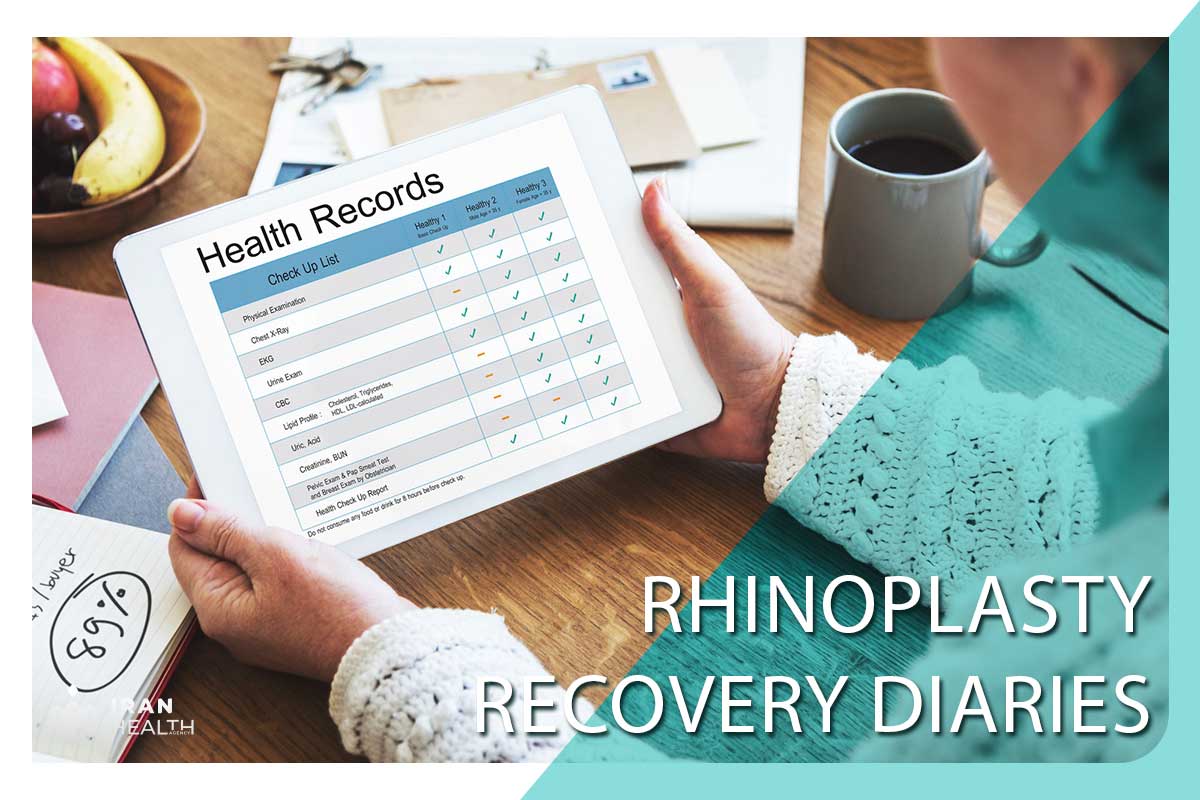Pre-Surgery Anticipation
A. Emotional and Mental Preparation
- Patients often feel a mix of excitement and anxiety leading up to surgery day.
- Talking through concerns and visualizing results help manage expectations.
- Relaxation techniques and support from loved ones can provide comfort.
B. Setting Realistic Expectations
- Thorough pre-surgery consultations prevent disappointment in outcomes.
- The surgeon should explain limitations and what is realistically achievable.
- Having patience through the healing process is critical.
III. Surgery Day Chronicles
- Arrive relaxed, well-rested, and with an empty stomach for anesthesia safety.
- The anesthesiologist provides medication to induce sleep before the procedure begins.
- Rhinoplasty involves meticulous reshaping of nasal structure through incisions.
- Upon completing surgical modifications, splints and casts are applied to protect and support proper healing.
- Initial side effects like stuffiness, pain, swelling, and bruising are common after surgery.
Surgery Day Chronicles
A. Arrival at the Clinic/Hospital
- Patients arrive with family or friends for support before the big procedure.
- The pre-op area is abuzz with medical staff preparing supplies and equipment.
- Nurses begin processes like IV insertion and vital sign checks.
B. Pre-Surgery Nerves and Excitement
- A mix of emotions surface as the surgery timeframe nears – anxiousness, anticipation, optimism.
- The surgical team provides reassurance while answering last-minute questions.
- Deep breaths help manage nerves as the countdown to surgery continues.
C. Initial Impressions of the Medical Team
- The nurses and anesthesiologists introduce themselves and explain their roles.
- Their calm demeanors and attentiveness help put the patient at ease.
- The surgeon does final nasal markings and shares words of encouragement.
- With trust in the capable medical team, the patient is ready for surgery.
The Initial Days Post-Surgery
A. Immediate Recovery Period
- Managing Discomfort
- The first 24-48 hours bring side effects like congestion, headache, pain, and tenderness around the nose and eyes.
- Medications are prescribed to alleviate discomfort during the healing process.
- Cold compresses and head elevation provide relief in the early stages.
- Early Observations of Changes
- The new nasal shape takes form under bandages, splints, and casting.
- Some swelling and bruising around the eyes occur but will dissipate.
- Breathing may be restricted at first by internal swelling and nasal packing.
B. Follow-up Appointments and Check-ins
- The surgeon examines the healing progress and asks about pain levels.
- Instructions are provided on wound care, activity restrictions, and medications.
- Follow-up visits continue for several weeks to monitor recovery milestones.
- Patients keep in touch with any concerns in between appointments.
Coping with Swelling and Bruising
A. Strategies for Minimizing Swelling
- Ice packs, head elevation, and medications help reduce swelling in the nose and under the eyes.
- Patients avoid salt, alcohol, and vigorous activity to prevent fluid retention.
- Swelling peaks at around 3 days post-op, then gradually subside over several weeks.
B. Dealing with Bruising and Discoloration
- Bruises develop around the eyes as blood pools internally and travel downward.
- The burst blood vessels create blue, purple, and yellow skin discoloration.
- Bruising fades after about 2 weeks but can be concealed with makeup.
C. Using Recommended Products for Recovery
- Gentle cleansers, ointments, and moisturizers soothe the skin and minimize dryness.
- Supplements like bromelain and arnica are natural aids to reduce bruising and inflammation.
- Saline sprays keep nasal passages clean as breathing returns to normal.
Emotional Rollercoaster
A. Dealing with Post-Surgery Emotions
- Mood swings, regret, sadness, and frustration are common while healing.
- Journaling, counseling, and support groups help patients process emotions.
- Reminding oneself the results will be worth it helps manage the ups and downs.
B. Balancing Patience and Anticipation
- Eagerness for the outcome makes waiting difficult.
- It’s important to understand complete healing takes months.
- Finding distractions and celebrating small milestones make time pass easier.
C. Support Systems and Coping Mechanisms
- Friends, family, and online groups provide comfort through recovery challenges.
- Relaxation techniques like meditation help relieve anxiety and sadness spells.
- It is important to maintain a self-care routine on the path to full recovery in order to improve mental health.
Daily Routine Adjustments
A. Modifications to Daily Activities
- Strenuous exercise and heavy lifting should be avoided for at least 3 weeks post-op.
- Work duties may need adjusting to avoid fatigue and nasal contact.
- Patients should get help with childcare, cleaning, driving, or other tasks as needed.
A picture of an exercise infographic
B. Incorporating relaxation
- Frequent napping and early bedtimes allow the body to heal.
- Reading, television bingeing, and hobbies like puzzles stimulate the mind while resting.
- Light walking provides gentle activity between rest periods.
C. Dietary Considerations for Recovery
- Eating pineapples, berries, citrus fruits, and greens aids the healing process.
- Staying hydrated with water and non-caffeinated beverages is important.
- Avoiding salty, spicy, or hard-to-chew foods minimizes discomfort.
- Nutritious, high-protein meals give the body fuel to mend.
Gradual Progress and Milestones
A. Celebrating Small Achievements
- The first glimpse of the new nose boosts spirits even if swollen.
- As bruising fades, patients get excited to show off results.
- Each week of increased energy and activity is an accomplishment.
B. Recognizing Changes in Appearance
- Around 6 weeks, the swelling has decreased enough to appreciate subtle changes.
- Friends and family may point out positive transformations they notice.
- Viewing before and after photos shows the nose refinements taking shape.
C. Updates on Breathing and Functionality
- Breathing generally improves as internal swelling goes down.
- Splints come off around weeks 1-2, allowing unobstructed airflow.
- By 6-8 weeks, most functional issues from surgery are resolved.
Unexpected Challenges
A. Unforeseen Complications
- While rare, complications like infection, bleeding, or adverse reactions can occur.
- Some patients experience distorted senses of taste or smell during recovery.
- Asymmetrical healing or unexpected scarring may need revision down the road.
B. Navigating Setbacks with Resilience
- Patience and calm perseverance help patients confront any hurdles.
- Leaning on loved ones for support makes overcoming difficulties easier.
- Focusing on end goals helps motivate patients through ups and downs.
C. Communication with the Medical Team
- Patients should promptly report any odd symptoms or problematic issues.
- The surgeon addresses complications and provides appropriate treatment.
- Extra follow-up visits may be needed to monitor and correct problems.
- Ongoing open dialogue with the surgical team is key.
The Final Reveal
A. Final Check-ups and Evaluations
- At around 6 months, the surgeon deems the nose fully healed.
- They examine and photograph the final results.
- Small revisions may be recommended if needed.
B. Reflections on the Entire Rhinoplasty Journey
- Patients remark on how quickly the months since surgery passed.
- They expressed gratitude for an outcome that boosted their confidence.
- Many reflect on the experience as transformative, inside and out.
C. Before and After Comparisons
- Side-by-side photos reveal the subtle but striking physical changes.
- Patients are excited to show friends and family their rhinoplasty results.
- The new nose brings harmony to facial features.
XIII. Conclusion A. Recap of Diaries’ Key Moments B. Acknowledgment of Contributors C. Closing Thoughts on the Rhinoplasty Recovery Experience



